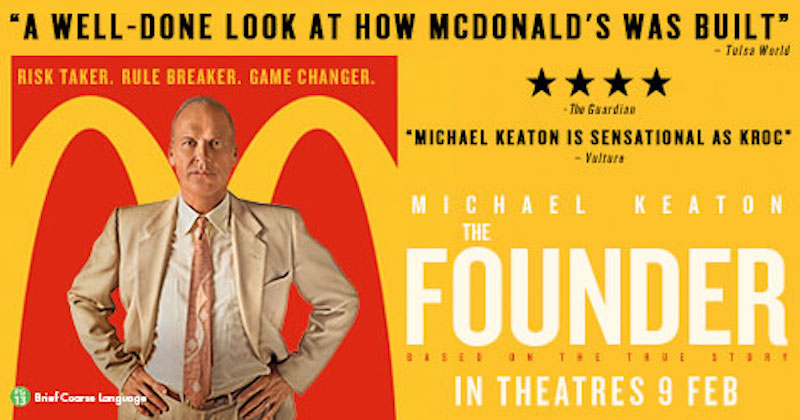Last night I watched the movie The Founder, starring Michael Keaton as McDonald’s Corporation founder and CEO Ray Kroc. It had some fascinating insights into how the McDonald’s brand was born, and I think the principles are still valid today over 60 years later.
1. Focus on the core
One of the most fascinating bits of the film shows the two McDonald brothers explaining to Ray Kroc how they came up with the idea for their first McDonald’s in San Bernardino, California. Their first attempt at a restaurant had an extensive menu covering everything from Chili to Ham & Baked Beans to Peanut Butter & Jelly with French Fries (ugh). The brothers did a decent trade in terms of sales, but the menu was complex and costly to make.
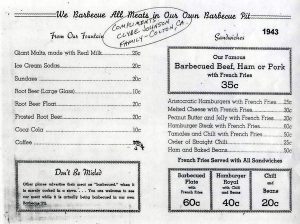
The first bit of genius was to focus on a few products they knew they could make really well. The revised menu featured just four things: Burgers (with or without cheese), French Fries, Soft Drinks and Milk Shakes. This simpler menu was quicker to make, and also made ordering for customers easier, speeding up service.
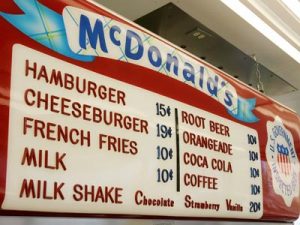
Fast forward to today and the McDonald’s menu has of course become much more complex. In contrast, newer chains like Five Guys have successfully used a simple menu with the focus on quality ingredients (see below).
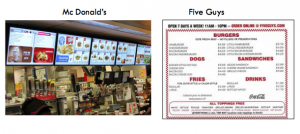
2. Be simply better
The McDonald brothers didn’t come up with a completely revolutionary new food offering. They sold burgers, fries and soft drinks just like many other competitive restaurants. Rather, they made their proposition ‘simply better’ by highlighting and addressing ‘pain points’ in the fast food customer experience. In particular, they focused on speed and accuracy of service through several process changes compared to a conventional ‘drive-in’ diner:
- Simpler menu (as above)
- Customers order/pick up food at a window, rather than giving orders to a waitress
- Customers ‘take away’ food rather than eating in their car
- Carefully designed production area to speed up process
The above changes allowed the brothers to create their ‘Speedee Service’, with food ready in 30 seconds, not 30 minutes, whilst also driving down costs.
3. Create a replicable brand recipe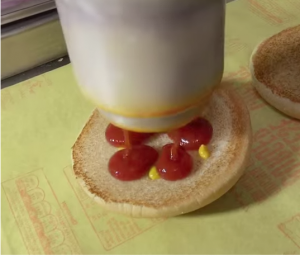
Its one thing to create a single successful restaurant. Its another thing altogether to scale it up to a chain with thousands of outlets, as Ray Kroc did with McDonald’s (not entirely fairly, according to the movie by the way). Key to this scaleability was a number of service elements that were easily replicable. This type of replicable ‘brand recipe’ is vital for service brands, who can’t afford to rely on what I call ‘random acts of kindness’: great service that relies heavily on individual employees. For example, the McDonalds brothers invented a special dispenser to put a precise number of squirts of ketchup and mustard on a burger. They also specified the number of slices of gherkin to always put in. This approach guaranteed consistency, controls ingredient costs and speeds up service, by simplifying the production process. The ketchup dispensing system is still used today, according to this post by a former McDonald’s employee.
4. Create an impactful identity
A final piece of the branding puzzle that Ray Kroc put into place was the impactful visual identity, especially ‘the golden arches’. The McDonald brothers had a design for the arches but hadn’t used them in the original restaurant. Kroc saw the potential (according to the movie at least) and started to use them to create an impactful look for McDonald’s that attracted customers, as shown in a flyer from the 1950’s below. The arches have of course become one of the world’s most recognisable and iconic brand properties, still going strong half a century later.
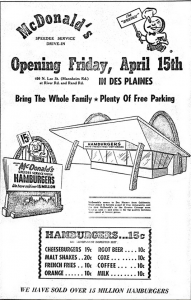
In conclusion, looking back at the birth of McDonald’s shows some enduring lessons for brand longevity: focus on a core product, build a replicable brand recipe and bring this to life with an impactful visual identity.
